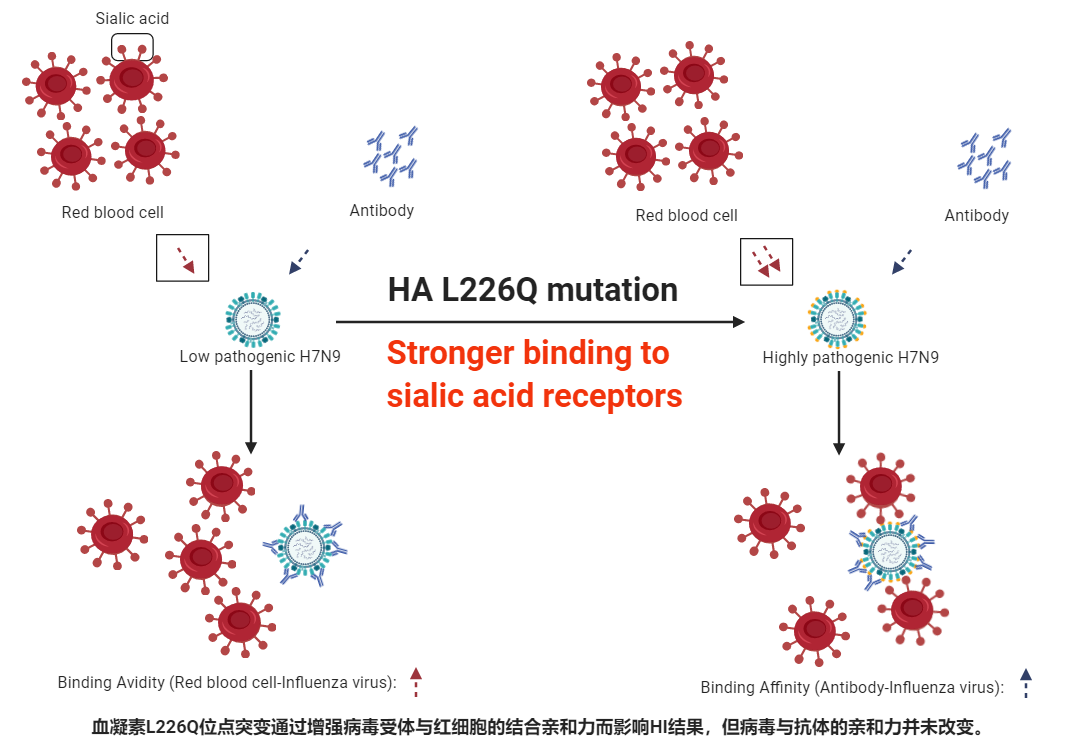SKLRD Achieves a Progress in the Research of H7N9 Vaccine
2020-08-281055Recently, the research team led by Professors Ling Chen/Weiqi Pan with the respiratory virus and infection science group of the SKLRD achieved a series of progress in the research of H7N9 vaccines. Relevant research findings were published online at the international virology journals Antiviral Research (IF: 4.101) and Journal of Virology (IF: 4.501) with a title of “Evaluation of the immune response of a H7N9 candidate vaccine virus derived from the fifth wave A/Guangdong/17SF003/ 2016”和“L226Q mutation on influenza H7N9 virus hemagglutinin increases receptor-binding avidity and leads to biased antigenicity evaluation”.
H7N9 influenza virus has been evolving since its emergence in 2013. Up to now, H7N9 influenza virus has experienced seven epidemic seasons, triggered five epidemic peaks, and showed high pathogenic H7N9 strains (HPAI H7N9) in the fifth epidemic, which seriously threatened human health and the sustainable development of national economy. The research group systematically analyzed the immunogenicity, antigenicity and key amino acid sites affecting the assessment of HA antigenicity variation of the candidate H7N9 vaccine strain A/Guangdong/17SF003/2016(gd/16) updated by the WHO in 2017 in the animal models of mice and macaques. Our study found that GD/16 vaccine strain had good immunogenicity in animal models, but the detection level of hemagglutination inhibitory antibody (HI) was low, and the previous vaccine strain A/Anhui/1/2013(AH/13) could provide complete protection for GD/16. But HI cross-reactivity was poor. The further study found that the mutation at hemagglutinin L226Q site could enhance the affinity of HA receptor and lead to deviation in the evaluation of antigenic variation of H7N9 influenza virus. These results suggest that the impacts of receptor affinity on HI results should be fully considered in analyzing the immune effect and antigen variation of vaccine strains for H7N9 and other sub-type influenza viruses. In addition to the traditional HI experiments, various serological detection methods (MN, ELISA) and in vivo protection experiments should be used to comprehensively evaluate the immune effect and HA antigen variation of vaccine strains. The research findings have important guiding significance for the future study of H7N9 virus variation and vaccine strain selection.

Link of the original text of the papers:
https://www.sciencedirect.com/science/article/pii/S0166354219306163?via%3Dihub
https://jvi.asm.org/content/early/2020/08/07/JVI.00667-20
















